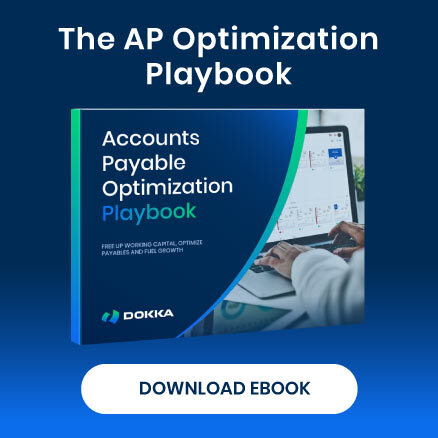NetSuite is a robust and versatile ERP platform that stands out for its ability to streamline and automate everyday business processes. It’s even more powerful when paired with AP automation tools like DOKKA.
Reducing manual work not only minimizes human error but also supports better compliance with policies and regulations. The result? More efficient, error-free workflow that allows your team to focus on what truly matters—higher-value tasks that drive growth and innovation.
In this guide, we explore the top 10 NetSuite automation ideas you can implement today to save your business valuable hours every week.
These aren’t just quick fixes—they’re practical, impactful strategies designed to help your team work smarter, not harder. To take your efficiency even further, we’ve also included a few bonus automations worth exploring.
- Automate Approval Workflows Using SuiteFlow
- Automate Recurring Billing and Invoicing
- Automate Saved Searches and Scheduled Reports
- Automate Bank Reconciliations with Bank Feeds and Matching Rules
- Automate Lead Assignment and CRM Follow-Ups
- Streamline Data Imports Using Saved Mapping Templates
- Customize Complex Business Logic with SuiteScript
- Automate Inventory Reordering and Cycle Counts
- Build Real-Time Dashboards with SuiteAnalytics Workbooks
- Automate Intercompany Transactions and Consolidations
1) Automate Approval Workflows Using SuiteFlow
Manually routing transactions for approval—whether for purchase orders (POs), vendor bills, time entries, or expense reports—consumes valuable time and increases risk. SuiteFlow, NetSuite’s built-in workflow engine, enables the creation of automated approval processes tailored to your organization’s rules and policies.
What You Can Do:
- Route POs automatically based on amount thresholds (e.g., <$5,000 to a department manager; >$10,000 to the CFO).
- Trigger approvals based on department, class, or subsidiary.
- Define escalation conditions (e.g., send an automatic reminder email after 48 hours of inactivity).
- Create parallel approval chains—especially helpful for cross-functional purchases.
Real Impact:
SuiteFlow minimizes delays caused by manual intervention and maintains audit-ready documentation. For organizations processing dozens or even hundreds of approvals each week, time savings can reach 5 to 10 hours—or more.
Bonus Tip: Incorporate decision logic to skip approvals for low-risk, recurring vendors or automatically reject invalid or duplicate entries.
2) Automate Recurring Billing and Invoicing
For companies offering subscriptions, maintenance plans, retainers, or recurring services, generating invoices each billing cycle is often time-consuming and error-prone. NetSuite’s Advanced Billing or SuiteBilling (depending on your licensing) helps automate the process and reduce manual workload.
What You Can Do:
- Create billing schedules tied to customer contracts or subscriptions.
- Handle fixed-fee, usage-based, or milestone-based billing.
- Automatically generate and send invoices on a set cadence.
- Enable automatic revenue recognition when using NetSuite’s Rev Rec module.
Real Impact:
Automating invoice generation can save over 20 hours per month, especially for companies billing hundreds of customers. Faster invoice delivery also helps improve cash flow.
Bonus Tip: Automated dunning campaigns can remind customers of past-due invoices at different stages (e.g., Day 7, 14, 30), eliminating the need for manual follow-up.
3) Automate Saved Searches and Scheduled Reports
Saved Searches are a core NetSuite feature and become incredibly powerful when paired with scheduling. While many teams still run reports manually, scheduled saved searches allow NetSuite to deliver data directly to inboxes on a recurring basis.
What You Can Do:
- Create dynamic saved searches for sales, inventory, finance, support, and more.
- Add filters and formulas to highlight trends or exceptions.
- Schedule delivery via email—daily, weekly, or monthly.
Examples:
- Daily email of all open Sales Orders over $50K.
- Weekly list of overdue invoices grouped by customer.
- Monthly report of items below the reorder point.
Real Impact:
Automating report delivery reduces the need for repetitive data pulls. Depending on how many reports your teams generate, this can save 10–15 hours each month—while also improving visibility and supporting better decision-making.
Bonus Tip: Use highlighting and conditional formatting in saved searches to make insights instantly visible (e.g., red text for invoices over 60 days overdue).
4) Automate Bank Reconciliations with Bank Feeds and Matching Rules
Bank reconciliation plays a critical role in closing the books and identifying errors or fraud, yet manual matching remains time-consuming. The Bank Feeds SuiteApp streamlines this process by pulling transactions directly from your financial institutions into NetSuite on a daily basis.
What You Can Do:
- Automatically import bank and credit card transactions
- Set up auto-matching rules (e.g., match payments to open invoices)
- Flag transactions that require manual review
- Reconcile accounts more frequently—not just at month-end
Real Impact:
Accounting teams can save 8–12 hours per month, while errors like duplicate entries or missing records are identified earlier. With daily reconciliations, finance teams gain real-time visibility into cash positions.
Bonus Tip: Pair with memorized transactions to automatically post recurring expenses such as rent, SaaS subscriptions, or lease payments.
5) Automate Lead Assignment and CRM Follow-Ups
Speed-to-lead is critical in sales. Manual lead assignment often causes delays, missed opportunities, and inconsistent customer experiences. NetSuite CRM enables rules-based automation to assign, score, and follow up with leads.
What You Can Do:
- Automatically assign leads based on territory, product, or rep workload.
- Send templated emails when a lead is created or converted.
- Score leads based on behavior or source.
- Schedule reminders or tasks for follow-up calls.
Real Impact:
Sales and marketing teams can save over 5 hours per week while increasing response times. This results in higher conversion rates and a smoother lead hand-off process.
Bonus Tip: If using marketing platforms like HubSpot or Mailchimp, integrate them to sync leads and campaigns with NetSuite in real time.
6) Streamline Data Imports Using Saved Mapping Templates
Many businesses regularly import data into NetSuite, including vendor price lists, inventory updates, customer records, and time tracking data. Manually performing these imports each time is inefficient, and can vary depending on who is handling it. NetSuite’s Import Assistant enables you to create and save mapping templates, making future imports seamless.
What You Can Do:
- Save field mapping templates for recurring CSV imports.
- Use validation previews to catch errors before importing data.
- Leverage default values and conditional mappings to reduce prep time.
- Automate part of the import process with SuiteScript or SuiteAnalytics Connect (for regular imports from external systems).
Real Impact:
Reusing import templates significantly reduces data prep and processing time. Teams can save 2–4 hours per session, especially for high-volume imports like inventory updates or price adjustments.
Bonus Tip: Combine saved import maps with preformatted Excel export templates from your vendors or suppliers to create a near plug-and-play process for updates.
7) Customize Complex Business Logic with SuiteScript
Not every automation need can be addressed through standard workflows or configuration options. When business processes demand custom logic—such as complex validation rules, record transformations, or automated record creation—SuiteScript is the ideal solution. It provides JavaScript-based scripting to customize NetSuite behavior at virtually any level.
What You Can Do:
- Automatically create or update records when trigger conditions are met (e.g., generate an invoice when a sales order is marked as fulfilled).
- Add custom field validations or enforce data entry standards.
- Build user-event scripts to automate calculations or populate related fields.
- Deploy scheduled scripts to process large volumes of data in batches.
Real Impact:
SuiteScript enables the implementation of highly specific business rules, potentially saving dozens of hours per month depending on the process and transaction volume.
Bonus Tip: Start small and modular. Build and test scripts in a sandbox environment, and document them thoroughly to simplify updates or troubleshooting later.
8) Automate Inventory Reordering and Cycle Counts
Manually monitoring inventory levels and placing purchase orders is not only tedious but also risky. Stockouts can result in lost revenue, while overstocking ties up capital. NetSuite’s Inventory Management tools allow for the automation of reorder points and stock monitoring, ensuring that you’re ordering at the right time, every time.
What You Can Do:
- Set up reorder points, safety stock, and preferred stock levels for each item.
- Enable automatic generation of purchase order suggestions when inventory falls below thresholds.
- Automate cycle count scheduling to improve inventory accuracy and reduce reliance on year-end counts.
- Receive low-stock alerts via saved searches or dashboard KPIs.
Real Impact:
Automated reordering helps maintain inventory availability while optimizing carrying costs. Inventory and procurement teams can save 5–10 hours per month and reduce emergency reordering or manual oversight.
Bonus Tip: Enhance reordering logic by enabling Demand Planning to calculate reorder quantities based on sales trends, seasonal patterns, or historical usage.
9) Build Real-Time Dashboards with SuiteAnalytics Workbooks
Pulling data into Excel, manipulating pivot tables, and creating static reports are time-consuming but also outdated. SuiteAnalytics Workbooks allow you to analyze NetSuite data directly in the platform using drag-and-drop tools, formulas, and charts. These dashboards update in real time, eliminating the need for repetitive reporting.
What You Can Do:
- Create custom dashboards with visual charts (bar, pie, pivot, etc.) based on live data.
- Build workbooks using multiple datasets—such as transactions, customers, or inventory.
- Enable users to filter, drill down, or export results without requiring admin access.
- Share dashboards securely with teams across finance, sales, operations, or executive leadership.
Real Impact:
Business users and analysts can save 10+ hours per month by eliminating manual report building. Real-time dashboards also support better, faster decision-making.
Bonus Tip: Use SuiteAnalytics KPIs alongside Workbooks to display high-level performance metrics (e.g., Gross Margin %, Open Opportunities, Inventory Turnover) directly on users’ home dashboards.
10) Automate Intercompany Transactions and Consolidations
Multi-entity organizations often face challenges with intercompany transactions, particularly when manually creating offsetting journal entries, managing currency conversions, or consolidating books. NetSuite’s Intercompany Automation SuiteApp and Multi-Book Accounting capabilities streamline this process.
What You Can Do:
- Automatically generate mirrored intercompany journal entries (e.g., an expense in one entity creates a receivable in the other).
- Set up elimination rules to prevent double-counting in consolidated financials.
- Use currency conversion rules for global subsidiaries.
- Schedule automated intercompany reports for period-end consolidation.
Real Impact:
Finance teams save 15–20 hours per month, particularly during month-end close, while also improving accuracy and ensuring compliance with accounting standards such as ASC 810 or IFRS 10.
Bonus Tip: When using Multi-Book Accounting, ensure your chart of accounts and subsidiary mappings are well-structured to facilitate clean, automated consolidation across books.
How DOKKA Can Save You Hours in NetSuite
DOKKA is a cloud-based accounting automation platform designed to significantly reduce manual work, saving finance teams up to 15–20 hours per month, particularly during the month-end close process. As a result, teams can focus on more strategic tasks and analysis, rather than time-consuming data entry and reconciliation.
While NetSuite provides robust financial management capabilities, DOKKA complements and enhances its functionality by automating critical accounting processes that still require manual intervention. Integrated seamlessly with NetSuite, DOKKA optimizes workflows, improves data accuracy, and ensures real-time synchronization, enabling teams to operate more efficiently and with greater precision.
How DOKKA Enhances NetSuite:
- Automated Invoice Processing
DOKKA leverages AI to automatically process vendor invoices, recognizing vendors, amounts, and general ledger codes with high precision. Once validated, journal entries are posted automatically to NetSuite, eliminating manual data entry, reducing errors, and streamlining workflows.
- Efficient Approval Workflows
The platform automates invoice and document approval processes, ensuring timely routing to the appropriate personnel. This speeds up the accounts payable cycle, minimizes delays, and boosts overall efficiency.
- Fast Implementation
DOKKA offers NetSuite integration that requires minimal IT involvement. Most customers are fully operational within 2–3 weeks, allowing businesses to quickly realize benefits without extensive system overhauls.
- Enhanced Financial Close Automation
DOKKA automates reconciliations, journal entries, and close workflows, significantly reducing manual work and shortening financial close cycles. This leads to faster, more accurate financial reporting and frees up time for teams to focus on strategic initiatives.
- Centralized Document Management
DOKKA consolidates all financial documents in one place and integrates them seamlessly with NetSuite. This reduces the need to switch between platforms, saving time and minimizing the risk of errors.
- Real-Time Data Synchronization
DOKKA’s integration ensures that financial data is always synchronized in real time, reducing discrepancies and supporting better decision-making. Continuous updates between DOKKA and NetSuite ensure that financial records remain accurate and up-to-date.
Want to learn more about why DOKKA is the perfect solution for your business? Contact us today to schedule a demo. Our team is dedicated to helping you streamline your financial processes and optimize your NetSuite experience.
Disclaimer: This article is based on publicly available information and the professional experience of the DOKKA team. DOKKA is not affiliated with Oracle or NetSuite.




